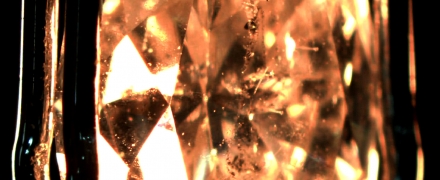open 10 am - 7 pm
laboratory is closed
Why drill diamonds?

In nature, not all diamonds are perfect in their purity, and people have learned to bring them to perfection. Often, large dark inclusions are present in diamonds. When viewed, they immediately catch the eye and impair the perception and play of the stone. In order to get rid of such defects in diamonds, a refinement method was invented - drilling. It consists in burning a channel in a diamond with a laser, along which etching (dissolution) of the inclusion by sulfuric acid subsequently occurs. As a result of this treatment, the cavity where there was a dark inclusion becomes light and less noticeable. Typically, the channels are drilled from the site at an angle of 90 degrees. This is done in order to hide them as much as possible when viewing. If the stone begins to rotate around its axis, then the drilling channels are perfectly visible in a magnifying glass. Outwardly, they are similar to thin tubular inclusions, however, their difference is that the channel necessarily has an exit to the surface of the stone.
This type of refinement is necessarily indicated in the certificate in the form of comments, since diamonds with drilling have a significant discount.
В геммологической практике бывают весьма увлекательные случаи с диагностикой ювелирных вставок
Но помимо редкости цвета и высокой стоимости таких камней, многие розовые камни выделяются одной замечательной особенностью – они проявляют плеохроизм, то есть в зависимости от положения осмотра камня он может иметь дополнительные оттенки – оранжевый или пурпурный.
Currently, gemstones are produced by two fundamentally different technological methods - the High Pressure - High Temperature method (“HPHT”, High-pressure & High-temperature) and the Chemical Vapor Deposition (“CVD”, Chemical vapor deposition) method. The "HPHT" method is the most tested classical synthesis method, which can be used both carbon deposition on diamond from flux melts and catalytic reactions. In "CVD" synthesis, diamond growth occurs on a seed during carbon deposition mainly from a gaseous medium at relatively low temperatures and pressures.
Jewelry and precious stones are just such a category of goods, when buying which you need to pay attention to many criteria.
Sogdianite is a rather rare mineral and more often it can be found as a collection material (moreover, in systematic collections), and it is extremely rare in jewelry.






